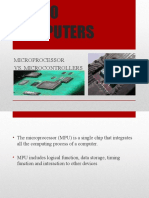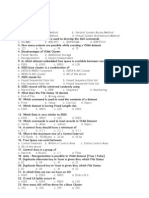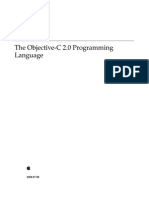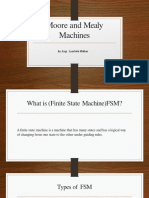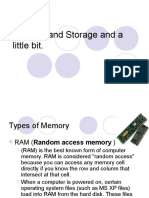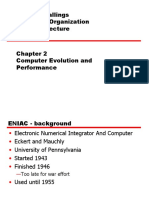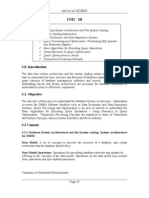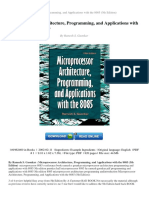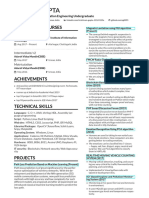William Stallings
Computer Organization
and Architecture
8th Edition
Chapter 2
Computer Evolution and
Performance
�Structure of von Neumann machine
�Details
• 1000 x 40 bit words
—Binary number
—2 x 20 bit instructions
• Set of registers (storage in CPU)
—Memory Buffer Register
—Memory Address Register
—Instruction Register
—Instruction Buffer Register
—Program Counter
—Accumulator
—Multiplier Quotient
�Structure–detail
�Commercial Computers
• 1947 - Eckert-Mauchly Computer
Corporation
• UNIVAC I (Universal Automatic Computer)
• US Bureau of Census 1950 calculations
• Became part of Sperry-Rand Corporation
• Late 1950s - UNIVAC II
—Faster
—More memory
�IBM
• Punched-card processing equipment
• 1953 - the 701
—IBM’s first stored program computer
—Scientific calculations
• 1955 - the 702
—Business applications
• Lead to 700/7000 series
�Transistors
• Replaced vacuum tubes
• Smaller
• Cheaper
• Less heat dissipation
• Solid State device
• Made from Silicon (Sand)
• Invented 1947 at Bell Labs
• William Shockley et al.
�Transistor Based Computers
• Second generation machines
• NCR & RCA produced small transistor
machines
• IBM 7000
• DEC - 1957
—Produced PDP-1
�Microelectronics
• Literally - “small electronics”
• A computer is made up of gates, memory
cells and interconnections
• These can be manufactured on a
semiconductor
• e.g. silicon wafer
�Generations of Computer
• Vacuum tube - 1946-1957
• Transistor - 1958-1964
• Small scale integration - 1965 on
—Up to 100 devices on a chip
• Medium scale integration - to 1971
—100-3,000 devices on a chip
• Large scale integration - 1971-1977
—3,000 - 100,000 devices on a chip
• Very large scale integration - 1978 -1991
—100,000 - 100,000,000 devices on a chip
• Ultra large scale integration – 1991 -
—Over 100,000,000 devices on a chip
�Moore’s Law
• Increased density of components on chip
• Gordon Moore – co-founder of Intel
• Number of transistors on a chip will double every
year
• Since 1970’s development has slowed a little
— Number of transistors doubles every 18 months
• Cost of a chip has remained almost unchanged
• Higher packing density means shorter electrical
paths, giving higher performance
• Smaller size gives increased flexibility
• Reduced power and cooling requirements
• Fewer interconnections increases reliability
�Growth in CPU Transistor Count
�IBM 360 series
• 1964
• Replaced (& not compatible with) 7000
series
• First planned “family” of computers
—Similar or identical instruction sets
—Similar or identical O/S
—Increasing speed
—Increasing number of I/O ports (i.e. more
terminals)
—Increased memory size
—Increased cost
• Multiplexed switch structure
�DEC PDP-8
• 1964
• First minicomputer (after miniskirt!)
• Did not need air conditioned room
• Small enough to sit on a lab bench
• $16,000
—$100k+ for IBM 360
• Embedded applications & OEM
• BUS STRUCTURE
�DEC - PDP-8 Bus Structure
�Semiconductor Memory
• 1970
• Size of a single core
—i.e. 1 bit of magnetic core storage
• Holds 256 bits
• Non-destructive read
• Much faster than core
• Capacity approximately doubles each year
�Intel
• 1971 - 4004
—First microprocessor
—All CPU components on a single chip
—4 bit
• Followed in 1972 by 8008
—8 bit
—Both designed for specific applications
• 1974 - 8080
—Intel’s first general purpose microprocessor
�Speeding it up
• Pipelining
• On board cache
• On board L1 & L2 cache
• Branch prediction
• Data flow analysis
• Speculative execution
�Performance Balance
• Processor speed increased
• Memory capacity increased
• Memory speed lags behind processor
speed
�ARM Systems Categories
• Embedded real time
• Application platform
—Linux, Palm OS, Symbian OS, Windows mobile
• Secure applications







